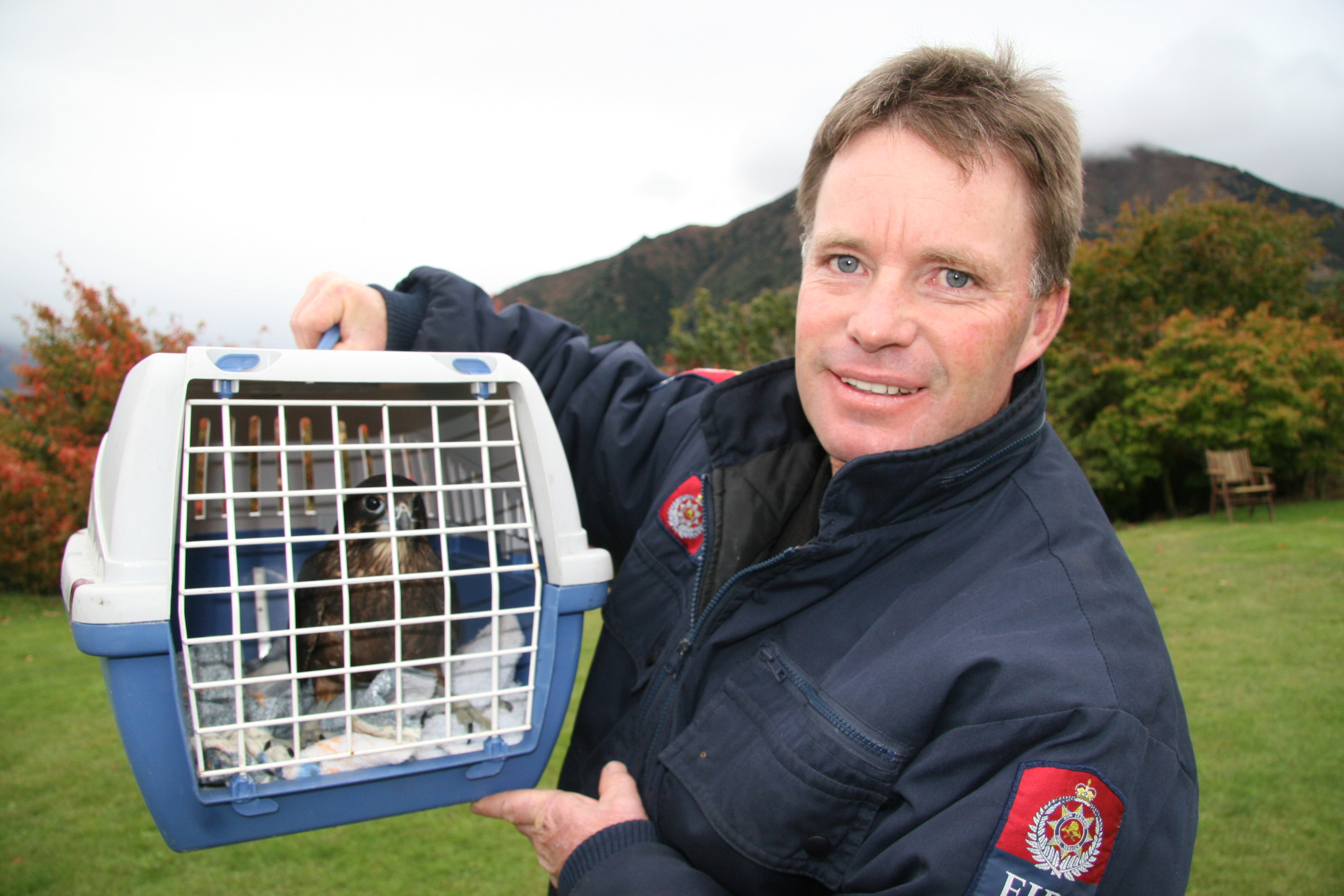
Builder and Lake Hawea Volunteer Fire Brigade Chief Fire Officer Brent Arthur found the injured karearea (New Zealand falcon) while working at a Dublin Downs property.
The bird injured itself after flying into a recently installed sliding glass door, Mr Arthur said. The injured female and her mate were well known to the builders at the site.
"We had just installed the door and the next day it flew right into it. It must have been used to flying through the space."
At first the bird hid under a nearby bush before Mr Arthur’s dog found it about an hour later.
A 44-gallon drum and two freezer baskets were used to capture the injured bird.
Mr Arthur rang the Department of Conservation, which took the bird to the Kiwi Birdlife Park in Queenstown to be rehabilitated. After three weeks recovering, the falcon was released back at the same building site where Mr Arthur found it.
"It’s great to be able to release back here at the site and I’m sure its mate has been missing it. There were a few hawks giving him a bit of trouble while she was gone," he said.
Doc community ranger Kerie Uren said it was fantastic to have the falcon return to the sky.
Normally when a falcon broke or injured its wing, the chances of it returning to the wild were slim.
"Often they simply can’t be fixed and rehabilitated due to the difficult nature of such an injury."
As the falcon was an apex predator, it was likely it would not have survived long if it had not been found.
Karearea pairs were not uncommon in Central Otago and the Upper Clutha, but they were still a threatened species, Ms Uren said. She praised Mr Arthur for his quick thinking and encouraged anyone who came across injured native species to contact Doc.
"It’s fantastic we have such a proactive and caring community in the Central Otago region," Ms Uren said.












